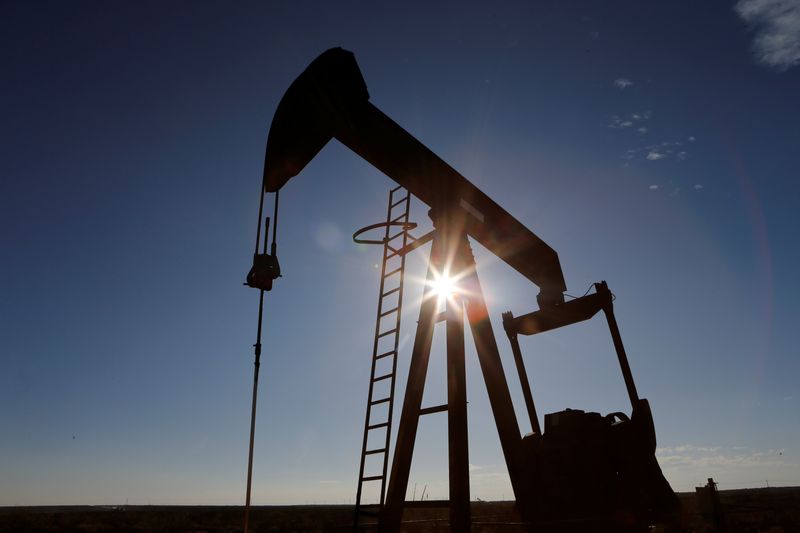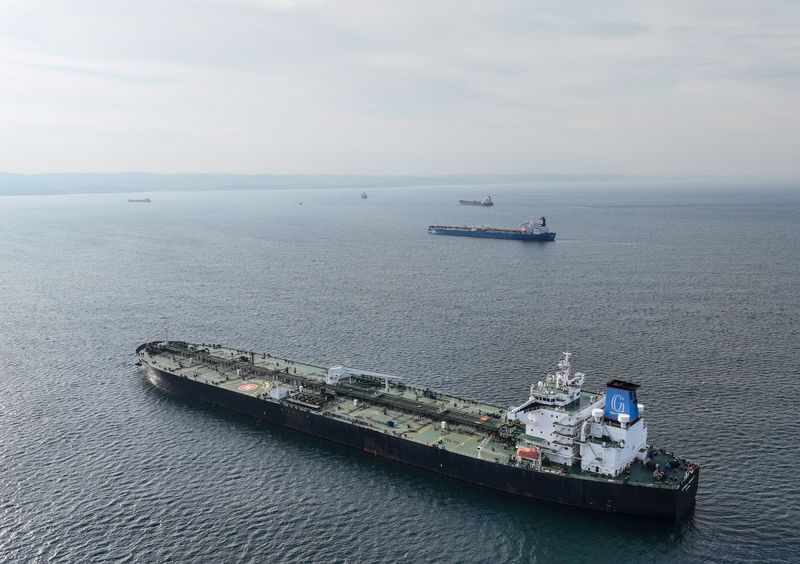
By Georgina McCartney
HOUSTON (Reuters) -Global oil benchmark Brent crude futures sank below $70 a barrel on Tuesday for the first time since December 2021, after OPEC+ revised down its demand forecast for this year and 2025.
Brent crude futures were down $2.61, or 3.63%, at $69.23 a barrel at 12:16 p.m. EDT (1616 GMT). U.S. West Texas Intermediate (WTI) crude lost $2.85, or 4.15%, to $65.86.
Both benchmarks fell by more than $3 during the session, after both rose by about 1% on Monday. WTI crude futures fell more than 5% on Tuesday, hitting their lowest levels since May 2023.
On Tuesday, the Organization of the Petroleum Exporting Countries (OPEC) in a monthly report said world oil demand would rise by 2.03 million barrels per day (bpd) in 2024, down from last month’s forecast for growth of 2.11 million bpd.
Until last month, OPEC had kept the forecast unchanged since it was first made in July 2023.
OPEC also cut its 2025 global demand growth estimate to 1.74 million bpd from 1.78 million bpd. Prices slid on the weakening global demand prospects and expectations of oil oversupply.
On Monday, Chinese data showed consumer inflation accelerated in August to its fastest in half a year, though domestic demand remained fragile, and producer price deflation worsened.
Asian refiners’ margins fell to their lowest seasonal level since 2020 last week on rising supplies of diesel and gasoline.
“There’s almost no oil demand growth in the advanced economies this year. Fiscal stimulus in China has not boosted the construction sector; that’s one big reason Chinese demand for diesel is shrinking,” said Clay Seigle, an oil market strategist.
While data released on Tuesday showed China’s exports grew in August at their fastest in nearly 1-1/2 years, imports disappointed with domestic demand depressed.
INCOMING STORM
Meanwhile, Tropical Storm Francine barrelled across the Gulf of Mexico, on track to become a hurricane on Tuesday, the U.S. National Hurricane Center said.
The storm could be a test for new liquefied natural gas (LNG) export plants in Louisiana, with Sempra’s Cameron LNG, Venture Global LNG’s Calcasieu Pass LNG and Tellurian (NYSE:TELL)’s Driftwood LNG development in the path of the storm.
Exxon Mobil (NYSE:XOM), Shell (LON:SHEL) and Chevron (NYSE:CVX) removed offshore staff and halted some oil and gas operations at facilities in the Gulf of Mexico. Exxon cut production at its Hoover oil facility about 150 miles east of Corpus Christi, Texas.
Chevron withdrew workers from four offshore facilities and halted oil and gas output at two. Shell cut production at one platform, moved workers off three facilities and paused drilling at two.

But production shut-ins have failed to offset weak demand sentiment, analysts said.
“We have a hurricane bearing down in the Gulf and we are still selling off hard here,” said John Kilduff, partner at Again Capital.
This post is originally published on INVESTING.


